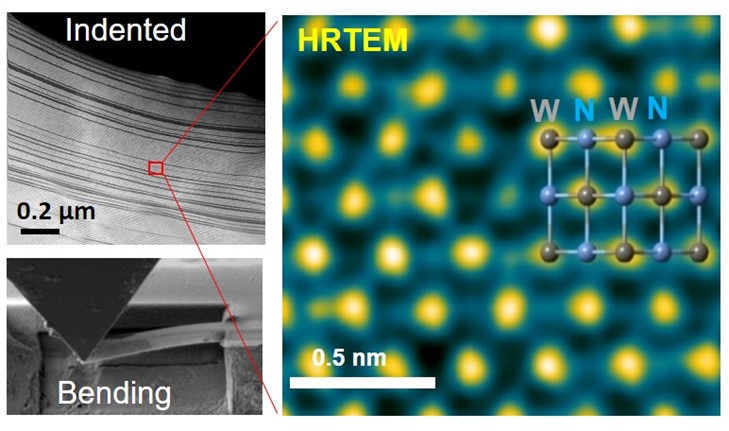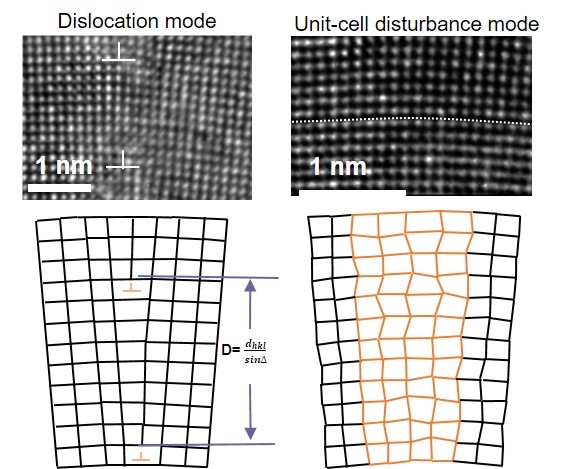Atomic-resolution revealing ceramic deformation --- Paper in Nature Communications

Our recent study found that a large number of vacancies stabilized in multilayers could largely enhance the strength and significantly improve the ceramic fracture, consequently exhibiting remarkable plasticity.
Through advanced experimental characterization (atomic-resolution imaging using our aberration-corrected (Cs-corrected) high-resolution transmission electron microscope (HRTEM)) and theoretical modeling, we found a novel deformation mechanism that is unrecognized yet in ceramic, i.e., unit-cell disturbance, which elucidates obvious plastic behaviors and takes responsibility for the excellent mechanical properties. Through such a unit-cell scale disturbance mode, local high-stress concentration can be substantially relieved, thus enhancing the deformability and toughness of ceramics. No dislocation activity involved also rationalizes its high strength. Our research proposes a new pathway to overcome the strength and toughness tradeoff in materials. The findings from this work have now been published in the renowned journal Nature Communications.
This study was financially supported by the Austrian Science Fund (FWF). It was conducted at the Erich Schmid Institute of Materials Science of the Austrian Academy of Sciences in Leoben and the Institute of Material Physics of the Montanuniversität Leoben (Austria) in cooperation with scientists from Vienna University of Technology (Austria), Linköping University (Sweden), Chair of Ceramics of Montanuniversität Leoben, as well as Graz University of Technology (Austria).
Priv.-Doz. Dr. Zaoli Zhang
Erich Schmid Institute of Materials Science
Austrian Academy of Sciences,
Email: zaoli.zhang@oeaw.ac.at
Tel: ++43-3842-804-311
Link to the online version of the paper: https://doi.org/10.1038/s41467-023-44060-x

Figure 1
A high-angle annular dark-field (HAADF) image shows the overall morphology after nanoindentation on WNx/TiN superlattices (upper left). Cantilever beam bending testing (lower left). Atomic resolution observation (HRTEM) of nitrogen vacancies and lattice distortion.

Figure 2
Upper: atomic resolution images (HRTEM), plastic deformation mediated by dislocation and unit-cell disturbance modes. Lower: two schematic diagrams showing dislocation and unit-cell disturbances mediated lattice rotation.